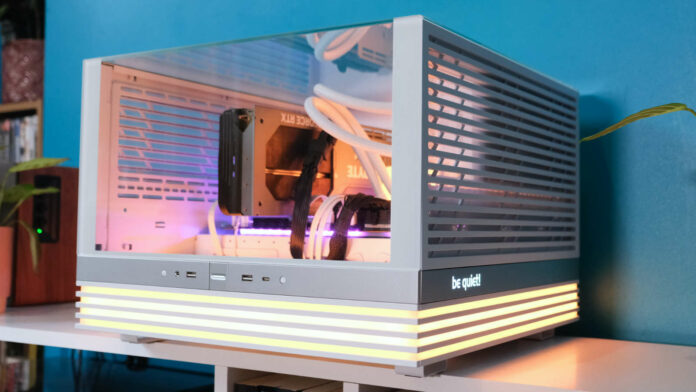As the saying goes, good things come to those who wait. While be quiet! has taken its sweet time making its first panoramic PC case, Light Base 600 is a stellar debut, primed and ready for those who need a little versatility from their chassis.
Starting at £134.99 / $149.90 / €139.90, it’s already one of the most affordable fishtank cases out there. There are a few marginally cheaper alternatives, such as NZXT H6 Air Flow and the odd Lian Li O11, but none come close to offering the same flair and adjustability. Even ranging up to the priciest £179.99 / $194.90 / €184.90 with included fans, the pedigree of the brand’s cooling eclipses the competition in terms of value.
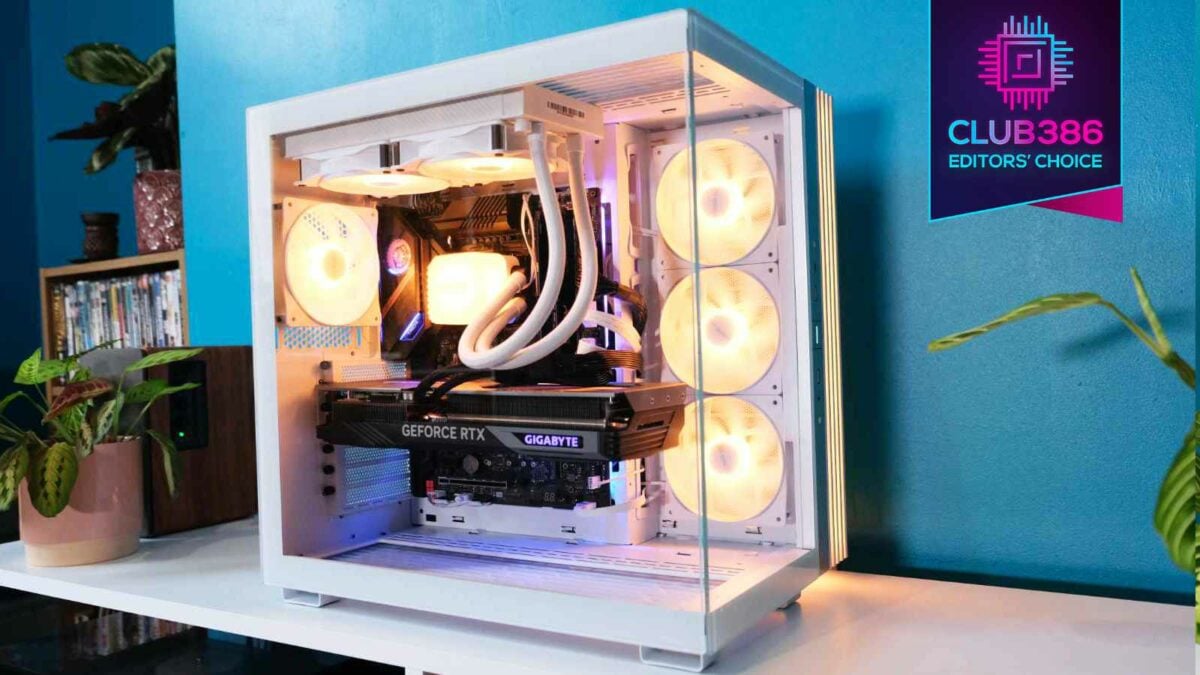
be quiet! Light Base 600 FX
£225 / $240
Pros
- Beautiful panorama
- Versatile layouts
- Spacious ARGB fan hubs
- Great cable management
- High-quality build
Cons
- Side lacks quick release
- Noticeably plastic feet
Club386 may earn an affiliate commission when you purchase products through links on our site.
How we test and review products.
Specification
Measuring 540mm x 305mm x 455mm, the case is firmly a mid-tower, albeit wider than the likes of be quiet! Shadow Base 800 FX to account for its dual chamber design. This lets you hide any length power supply behind the motherboard rather than necessitating a shroud at the bottom to keep everything neat.
There’s plenty of space for the biggest and best graphics cards, but you’ll need to be mindful of motherboards. ATX models like my ASRock Z690 Taichi fit snug as a bug, but E-ATX fans should instead turn to the bigger Light Base 900 for extra room.
| Light Base 900 FX | Light Base 900 DX | Light Base 600 FX | Light Base 600 DX | |
|---|---|---|---|---|
| Motherboard support | E-ATX | E-ATX | ATX | ATX |
| Radiator support | 420mm | 420mm | 360mm | 360mm |
| Included fans | Four 140mm | None | Four 120mm | None |
| MSRP (Black) | £214.99 $229.90 €219.90 | £173.99 $179.90 €169.90 | £169.99 $184.90 €174.90 | £134.99 $149.90 €139.90 |
| MSRP (White) | £224.99 $239.90 €229.90 | £189.98 $187.90 €179.90 | £179.99 $194.90 €184.90 | £144.98 $159.90 €149.90 |
| Warranty | 3 years | 3 years | 3 years | 3 years |
In the name of variety, be quiet! offers Light Base 600 in several different configurations. You can get it in black or white and with or without fans of the same colour. It’s nice to have the option to save some pennies if you already have your own blowers, but they’re worth the extra cost.
Opting for the complete package, you get four Light Wings LX 120mm PWM fans, which are the same ones that sit atop Light Loop 240. I can’t recommend them enough, as the three side-mounted models feature reversed fan blades, so there’s no pesky frame getting in the way of your aesthetics.
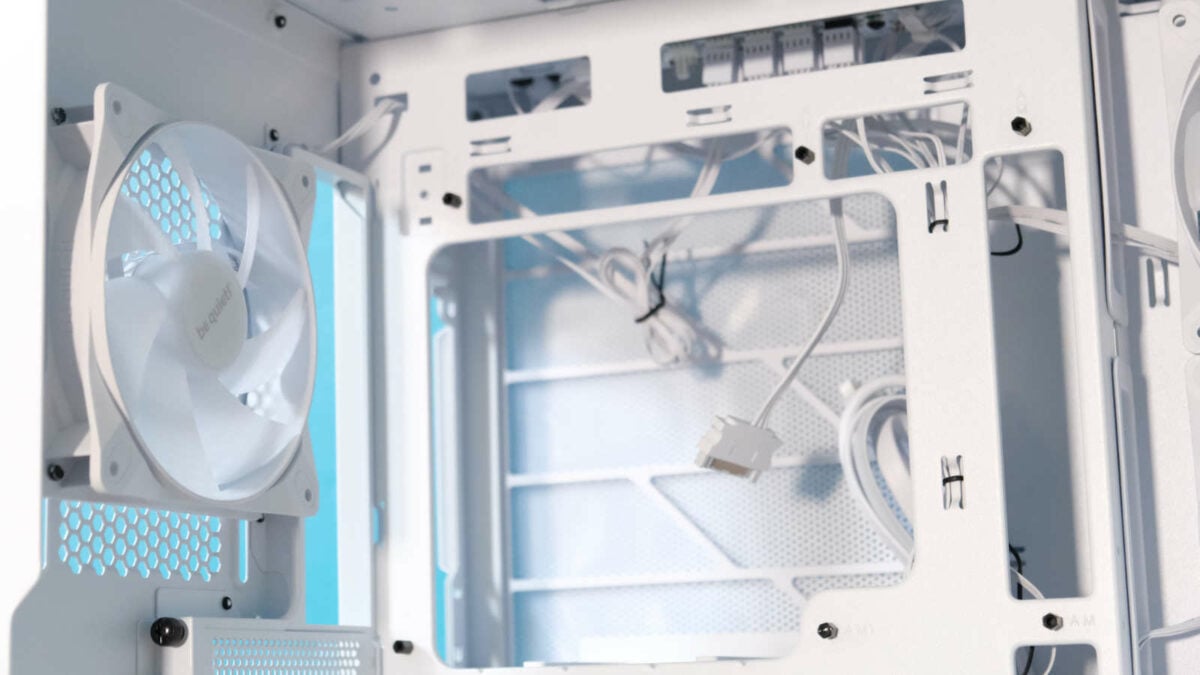
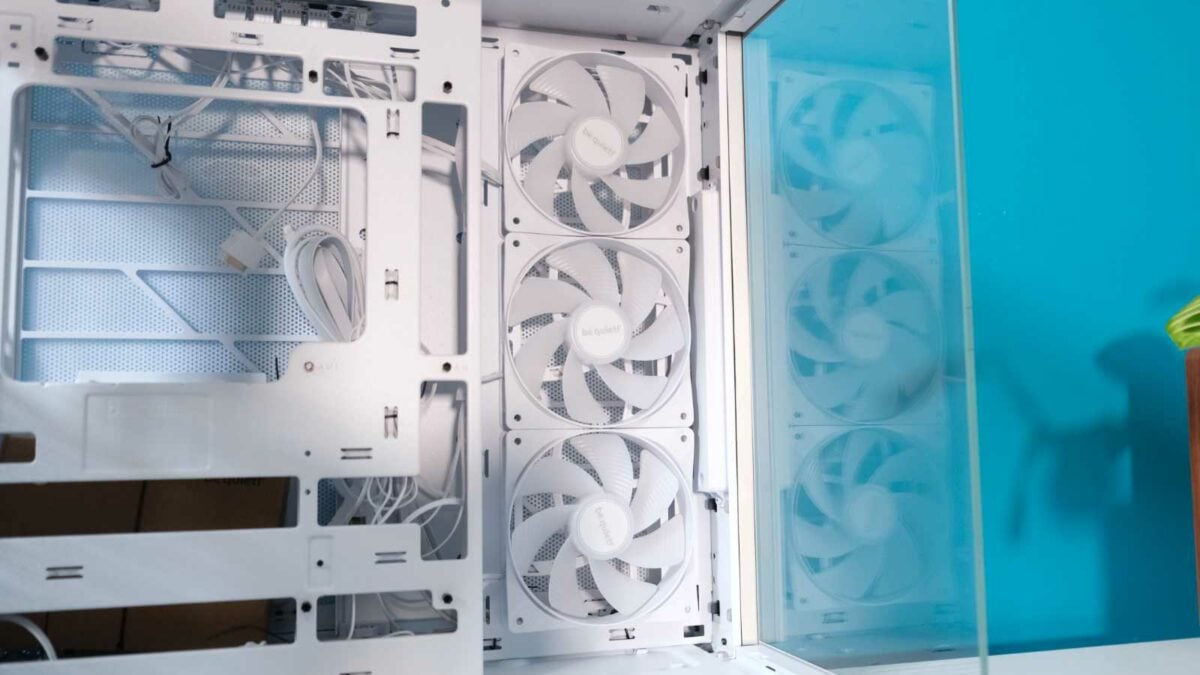
Each fan synchronises with the massive lighting strip around the edge via one of two ARGB hubs. One hub sits at the top while the other rides along the bottom, so they’re always within reach of your fans. With six connections each for a total of 12, there are plenty to accommodate every fan you can fit in the case, as well as pumps and other ARGB gizmos.
You can fit a total of ten 120mm fans throughout the case, with three across the top, side, and bottom, as well as a single fan at the rear. Alternatively, you can swap six of these out for four 140mm fans – two along the top and two on the bottom. This gives way for up to two 360mm simultaneously.
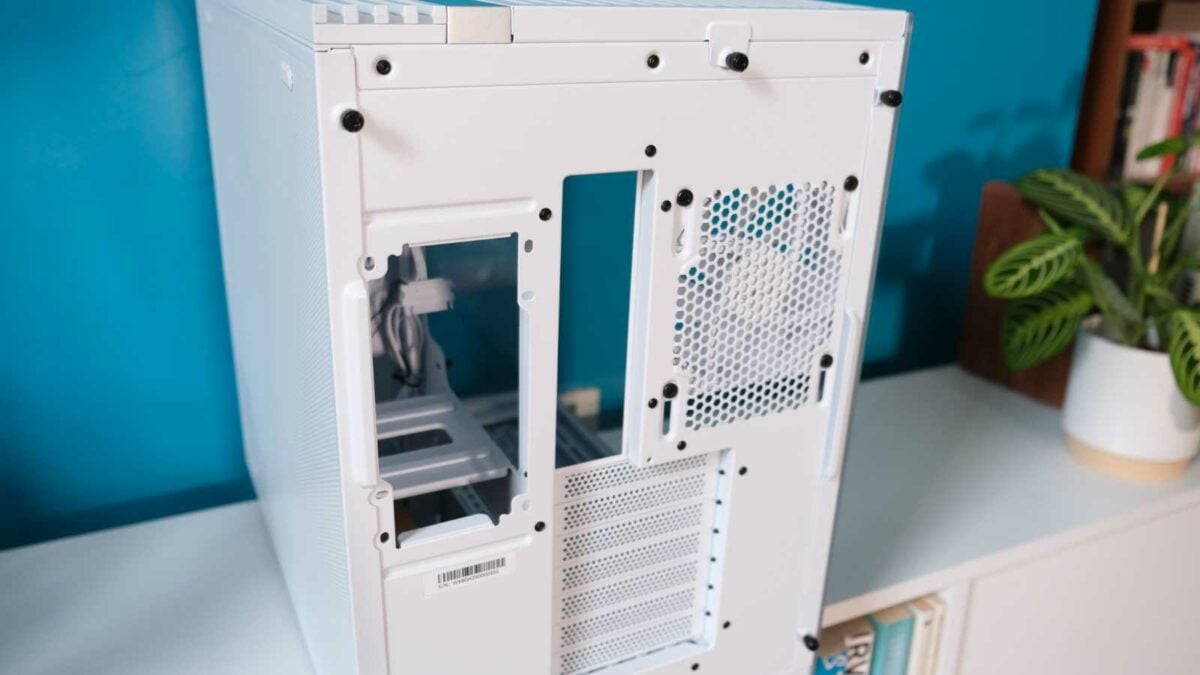
Design
If you’re going to make a showcase build, then why not pull out all the stops? Not only is Light Base 600 the first panoramic be quiet! case, it’s also the brand’s first to include backside motherboard connector support. It works seamlessly with models like MSI Project Zero, Asus BTF, or Gigabyte Project Stealth to give an extra clean finish.
For those stuck with a few wires poking through, the chassis features fantastic cable management. Grommets are either angled or tight enough not to showcase the spaghetti bundles hiding beneath. I particularly love the hinged cover behind the motherboard, which makes popping the side panel back in far easier. It’s saved me from endless frustration and looks a treat.
It’s not just game system requirements shifting towards SSDs, as there isn’t much room for old-school storage here. With space for just one 3.5in HDD, you might need to rely on the two 2.5in bays to fill in. If you need any more than that, you can attach an optional cage for another two 2.5in drives.
The front I/O panel ticks all the right boxes, featuring two USB Type-A ports on either side of the power button, paired with a single USB 3.2 Gen 2 Type-C and an audio jack. One of the white switches changes the lighting presets on the case, while the other reboots your system. It’s good to see the return of the reset button that I’ve long missed.
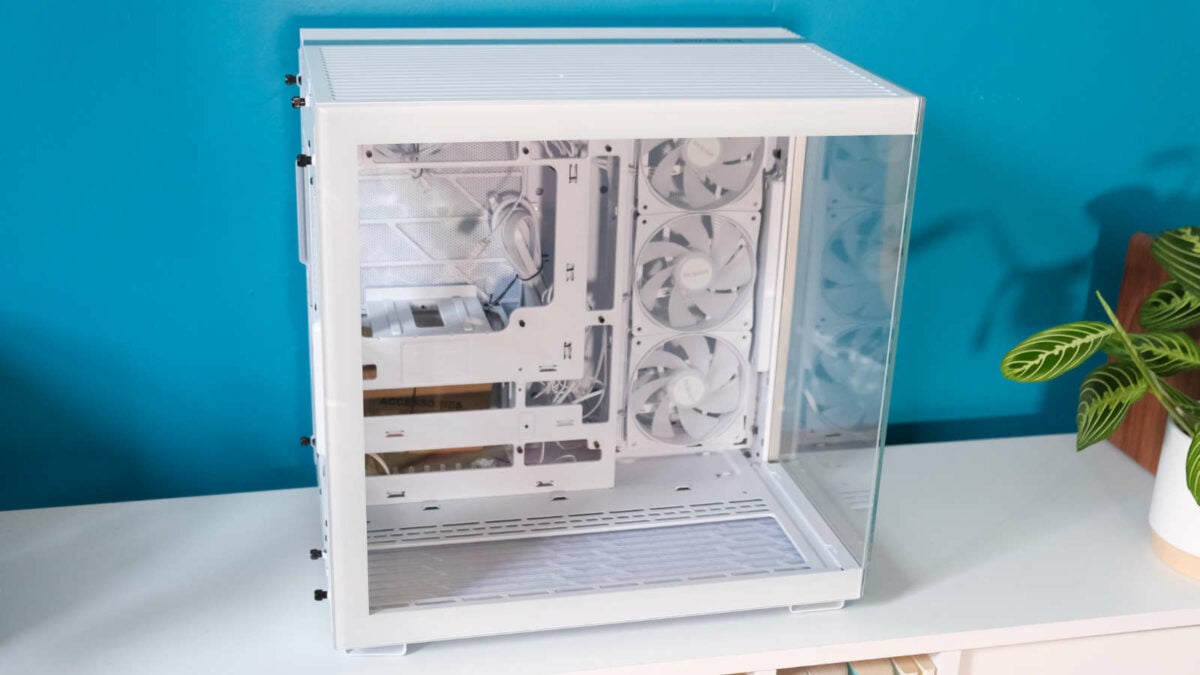
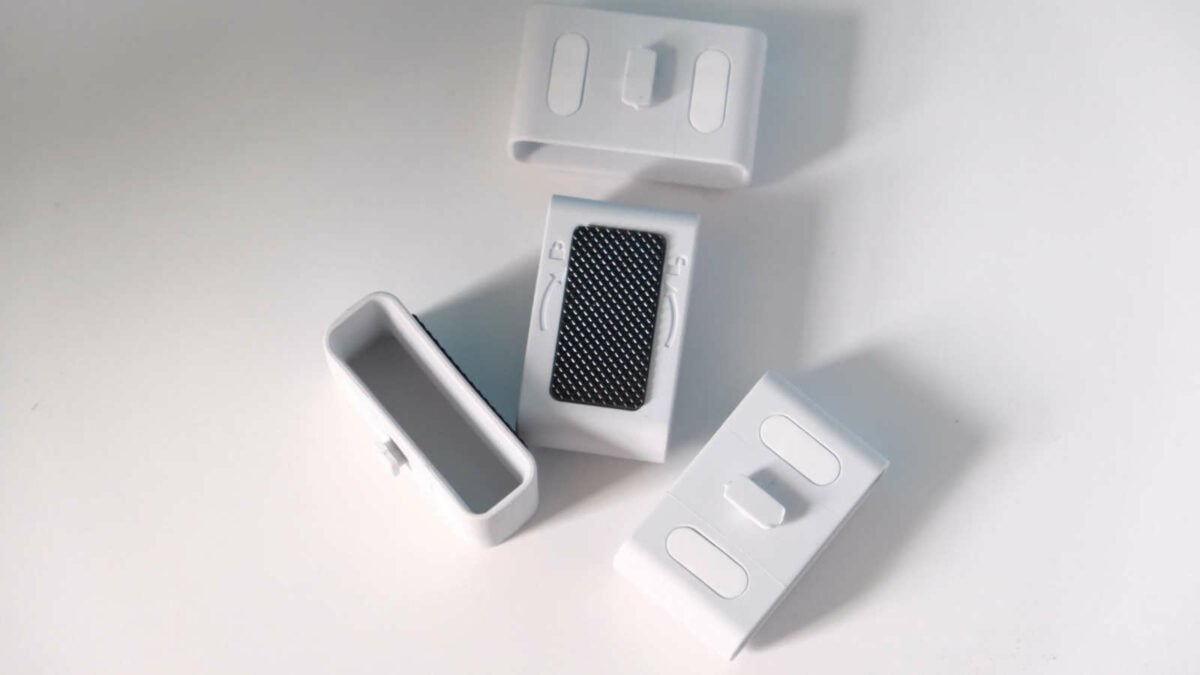
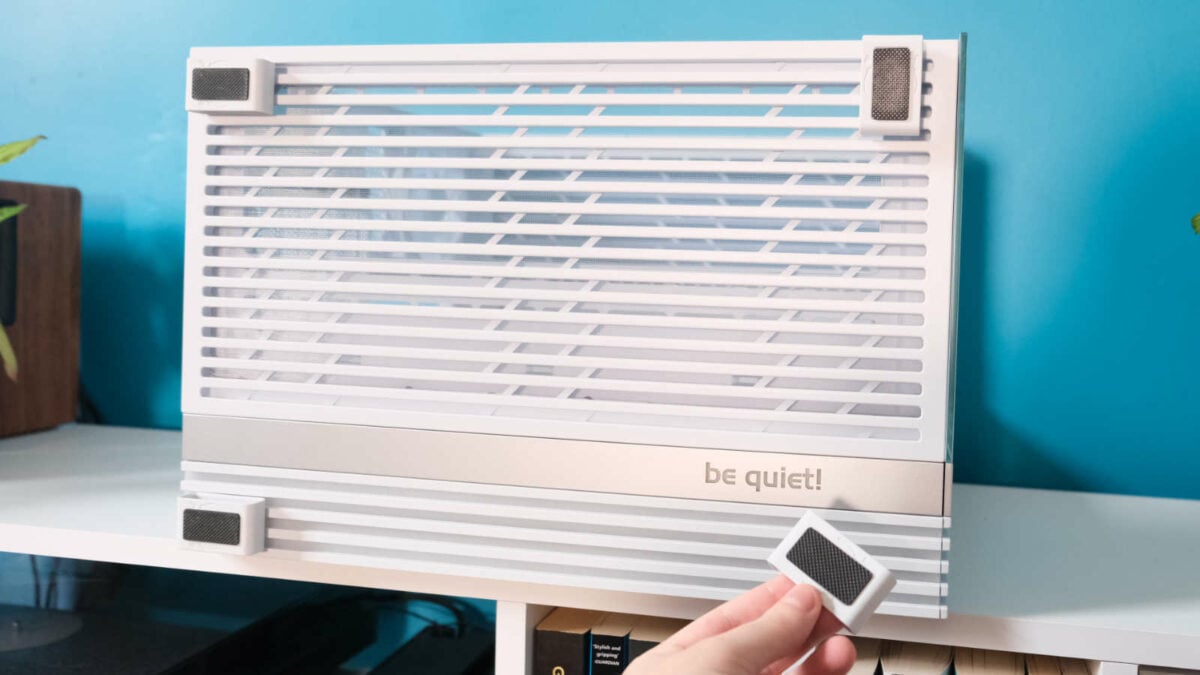
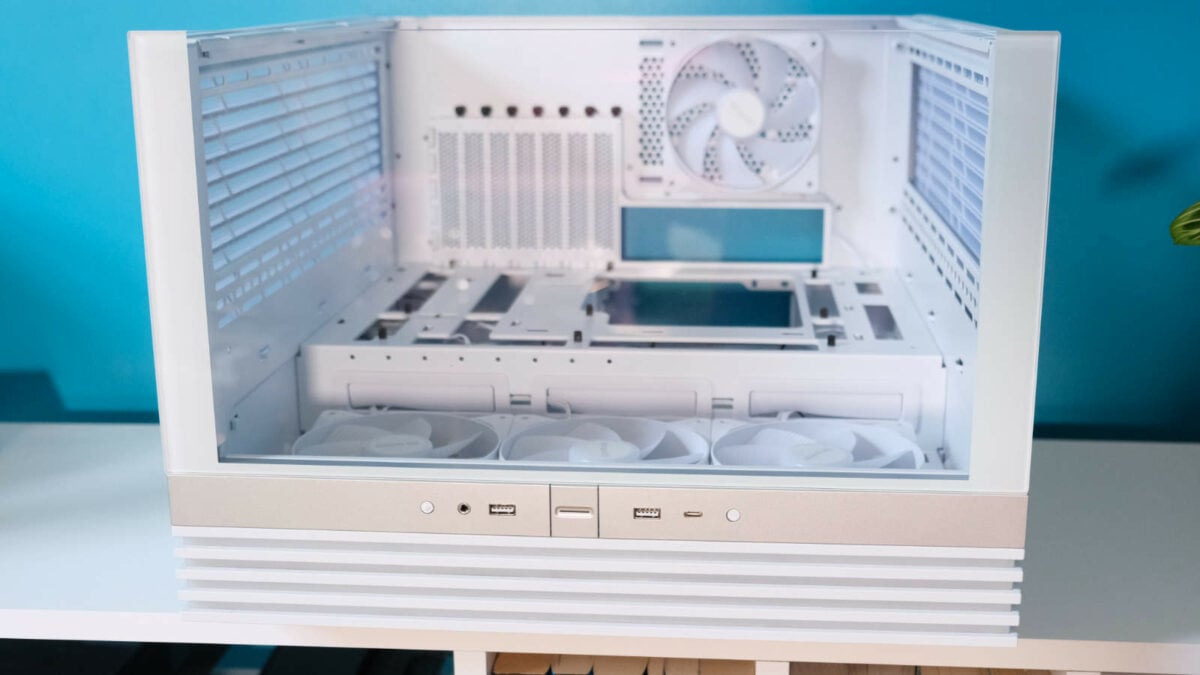
Choosing your layout
Inverted layouts are nothing new. In fact, it’s be quiet!’s bread and butter, with Dark Base 701, Dark Base 901, and Silent Base 802 all letting you reverse your motherboard. Usually, this involves dismantling a case’s internals in their entirety and reassembling them from scratch. Not here, though.
Cracking the code, you can turn your Light Base 600 into a left-side setup in a matter of seconds. There’s no need to faff about with internals. Instead, you simply remove the four feet from their sockets, place them on top, and physically flip your PC like a pancake.
Left at just that, it’s already a marvellous design, but the company goes a step further. With plugged cutouts on the mesh side panel, you can use the same technique for a horizontal layout. It’s too thicc with double Cs to pass as an HTPC (home theatre personal computer), but it harkens back to better days when systems used to reside under the monitor while still giving a peek at the goods underneath.
At first, I questioned the quality of the feet since they’re made of malleable plastic, but the reason becomes clear as you build. They don’t scratch the case as you reposition them. I dread to think of my sinking heart if that would blemish my pristine new case. They’re sturdy enough, not buckling under the pressure of a fully-built rig, but part of me still wishes it matched the rest of the case.
While it’s possible to flip the rig on the fly, it’s much easier to choose your orientation before building. After all, you don’t want to put any unnecessary stress on your motherboard if you have a heavy graphics card plugged in or chonky air cooler attached.
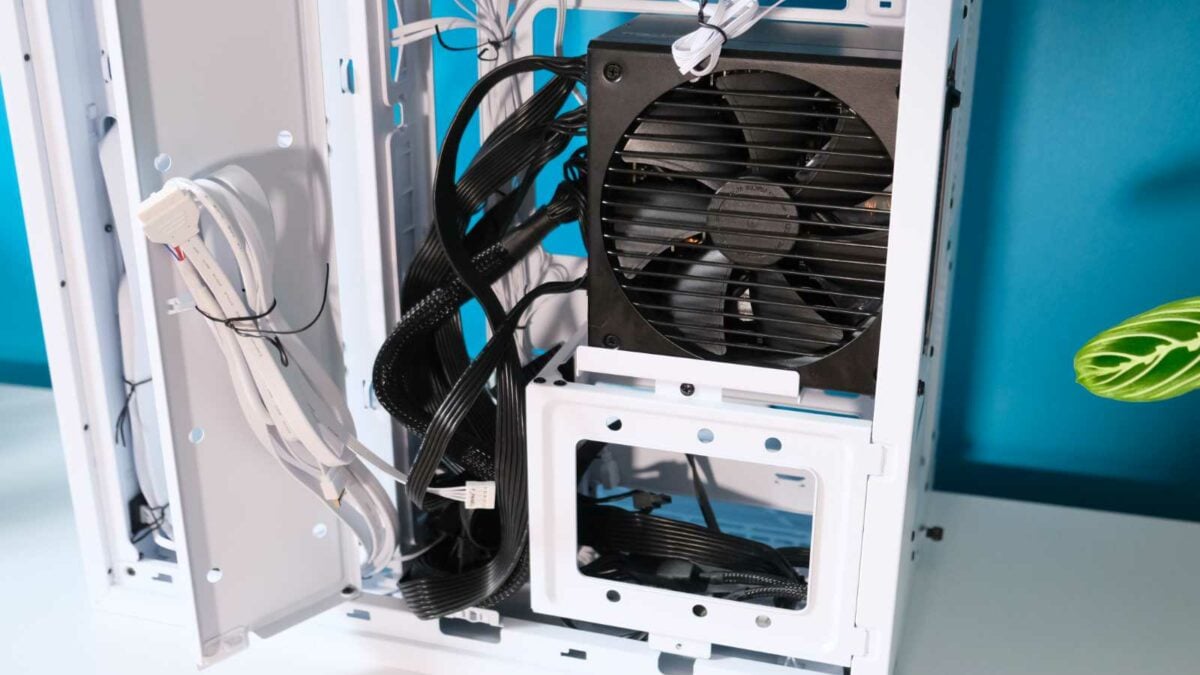
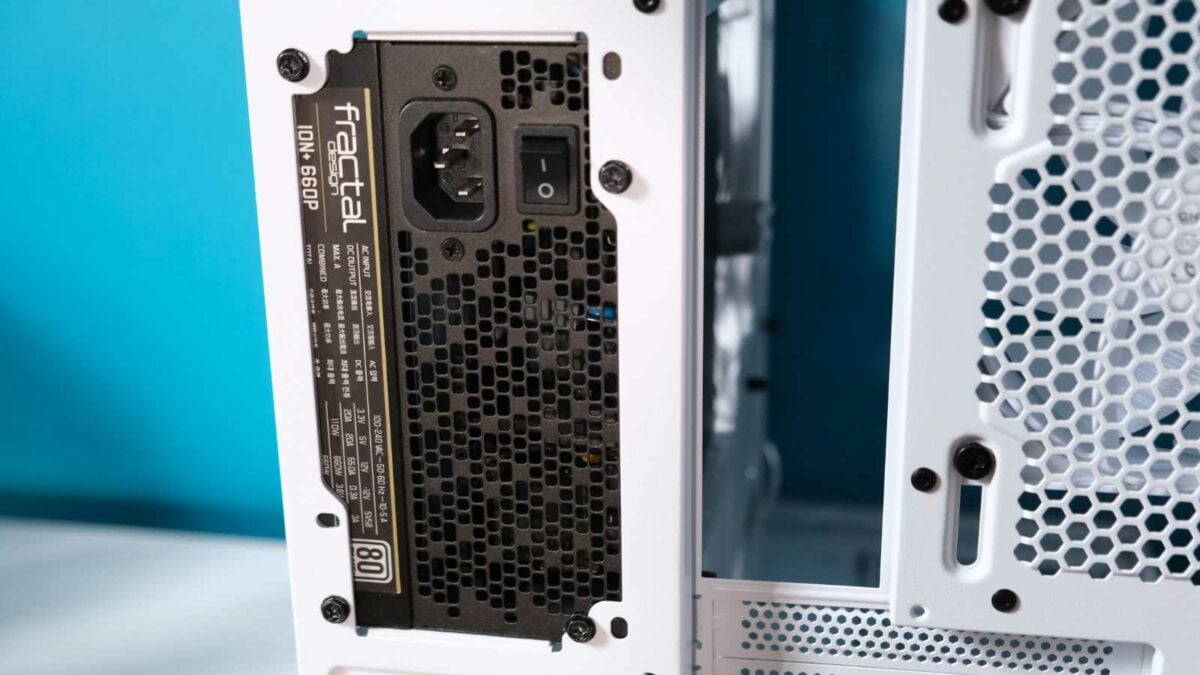
Building
With no quick-release buttons, popping off the side panel requires fiddling with thumb screws. Although I prefer the truly toolless approach, I appreciate that this gives a little extra security so the tempered glass doesn’t jump out of the frame, and it’s easy enough to slide back in. Its absence will rub some the wrong way, but more mechanisms mean more points of failure, so it’s swings and roundabouts.
The accessories box is held prisoner inside the HDD cage, and the only way to free it is to twist three screws and open the gate. It’s a clever solution to stop it rattling around and potentially damaging the glass. Within, you’ll see an assortment of mounting screws, rubber plugs, and the GPU bracket, which works in all orientations.
Fitting our test bench was mostly business as usual, placing ASRock Taichi Z690 on top of the integrated standoffs. It hangs sturdy with no flex, which is fortunate considering the power supply sits directly behind it. One thing to note is that the chassis is particularly mindful of top-mounted radiators, as there’s no lip hindering installation. Too often, I’ve fought with metal frames to line up my screwdriver, but be quiet! makes it as easy as possible.
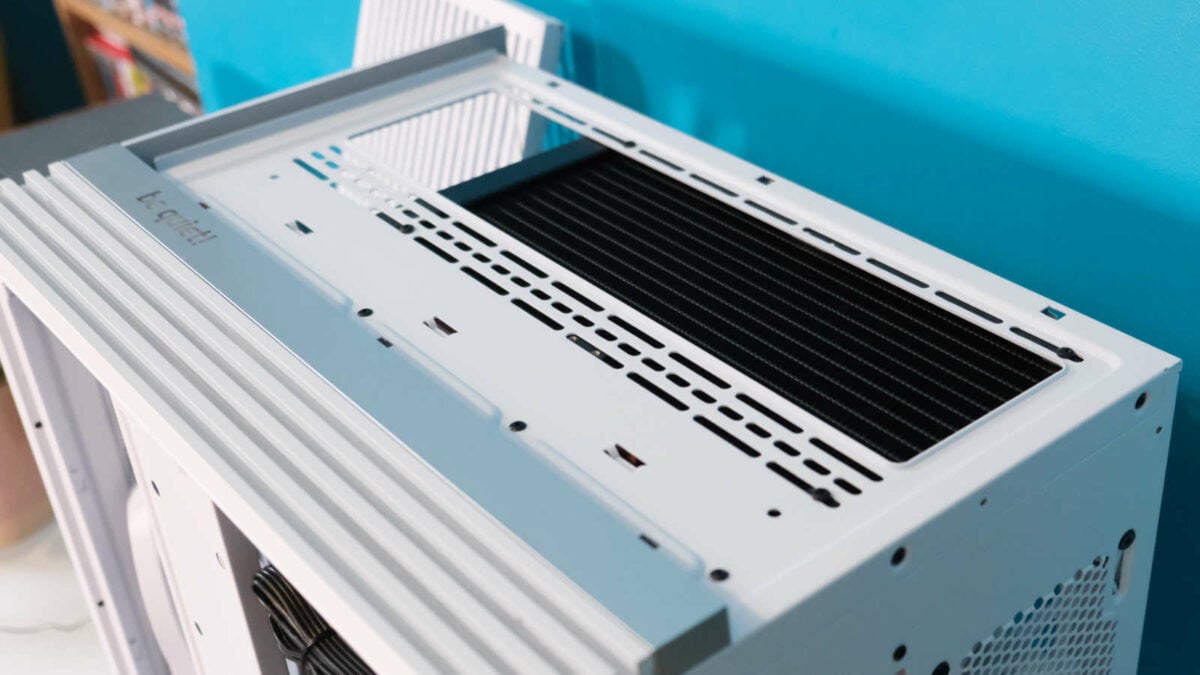
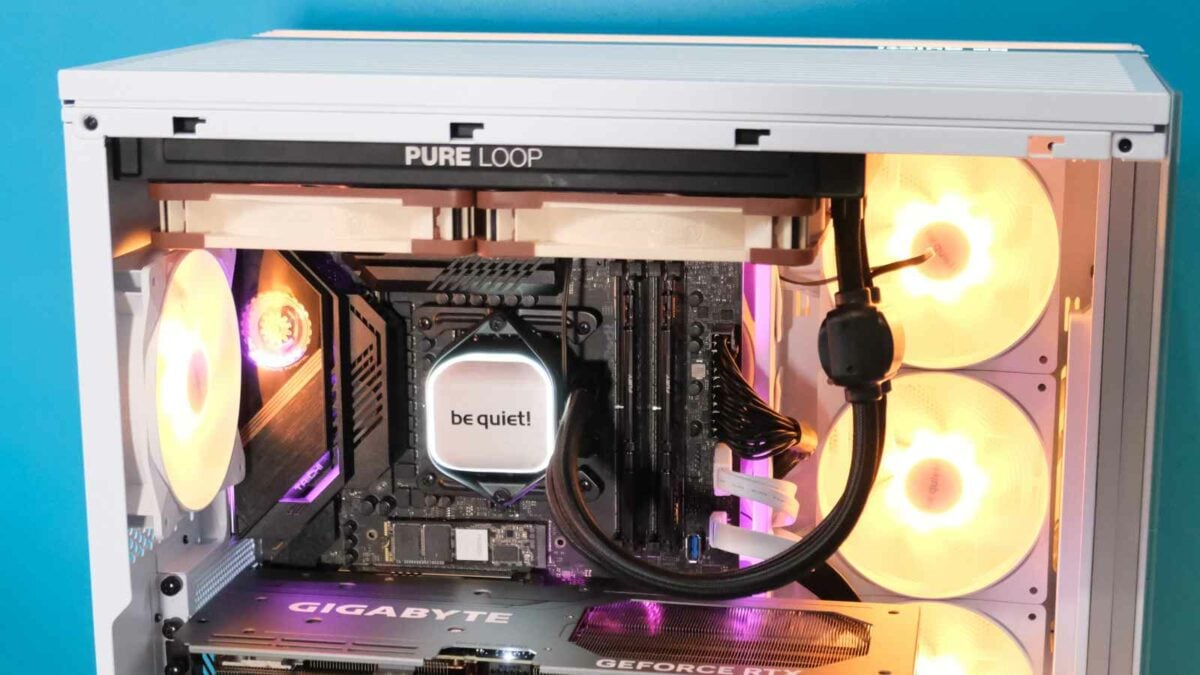
Usually, cable management is a chore that ends with a fight to fix the rear panel over the bulging mess. It’s the complete opposite here, with the spacious dual chamber design giving you a bigger play area and the magnetic rear cover hiding most wires both simply and elegantly.
Normally, I wouldn’t choose a 240mm AIO to cool Intel Core i9-13900K ahead of our regular tests, but as you can see, there’s no denying a white Light Loop and Light Base are a match made in heaven compared to the darker Pure Loop and Noctua fans. Ultimately, six Light Wings LX 120mm fans result in a supremely quiet build ranging between sub-30dBA idle and around 40dBA under load, using a gentle fan curve.
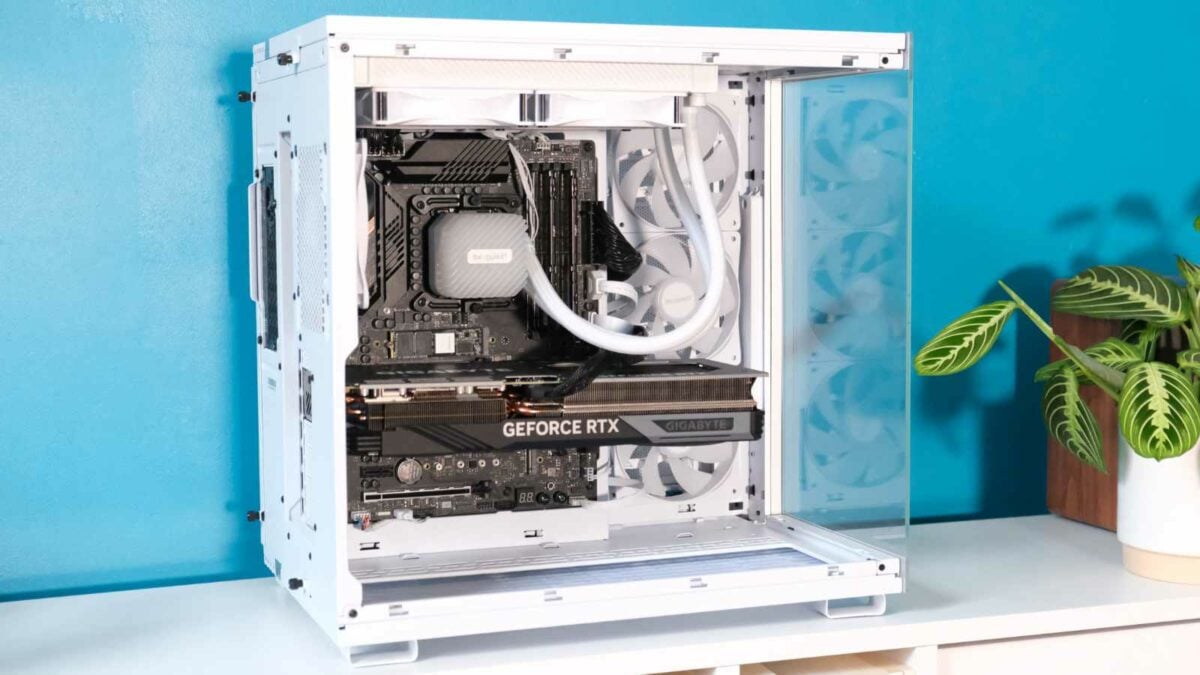
Conclusion
Considering be quiet! was late to both the RGB and panoramic case parties, it’s surprising just how masterfully crafted Light Base 600 is. It offers a spectacular light show on top of a gorgeously uniform white case from head to toe. Naturally, the bleached version is best partnered with unpigmented components, but you can’t go wrong with the panda look when your system is packed into such a showstopper.
With three styles in one, you can swap between standard, inverted, and horizontal layouts within seconds. Pair this with backside motherboard connector support, and Light Base 600 could be the last case you’ll ever need. Fans of bigger components, such as 420mm AIOs and E-ATX motherboards, need only turn their attention to Light Base 900 for a roomier experience.
I have a lot of love for the base model’s £134.99 / $149.90 / €139.90 price tag, but there’s unrivalled value in getting the full kit with four Light Wings LX fans. Not only do I recommend the entire set, but if I was in the market for a case, this would be the one I’d buy.
Verdict: a picturesque panoramic PC case with remarkable versatility that puts your parts on display.

